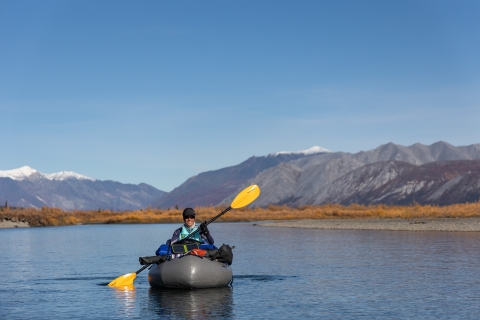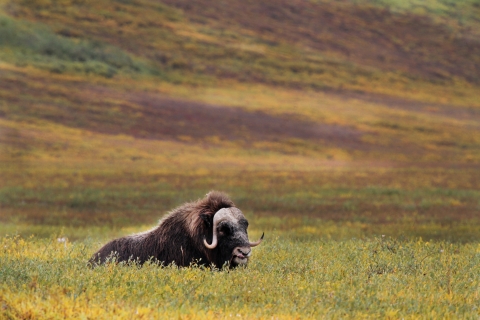December 9, 2024: The Bureau of Land Management issued the Record of Decision for the Coastal Plain Oil and Gas Leasing Program Supplemental Environmental Impact Statement and announced the lease sale: Congressionally mandated lease sale announced for Alaska’s Coastal Plain | Bureau of Land Management
Approximately the size of South Carolina, the refuge has no roads or facilities. The lands and waters are a critical home to migratory and resident wildlife, have unique recreational values, and contain the largest designated Wilderness within the National Wildlife Refuge System. Many people may know of the refuge by an abbreviation: ANWR (pronounced an-whar). The full name reminds us that the refuge is part of our national heritage, designated for wildlife conservation.
Visit Us
Interactive map of Arctic Refuge.
A trip to Arctic National Wildlife Refuge can be an inspiring, life-changing experience. Whether you want to photograph, fish, hunt, challenge yourself with travel in the backcountry, or just spend quiet time in an immense and humbling landscape, this is a truly remarkable place.
All refuge lands are open to the public, and there are no visitor fees or specific entry points. Visitors plan and arrange their own transportation, trip locations, and itineraries; careful preparation, and self-reliance are a must. There are no roads, established trails, or facilities of any type within the refuge's 19 million acres. Most bring their own food and gear, and access the refuge by air taxi, flying in from nearby communities. First-time visitors may wish to participate in a guided trip. Even experienced visitors may wish to use the support of commercial recreational services (see Tours for information about authorized recreational guides, hunting guides, and air taxi operators). Although there is no cell phone coverage, satellite phones do work in many areas. Explore the Activities section and see Rules and Policies for additional helpful trip planning information.
Location and Contact Information
- Arctic National Wildlife Refuge
- Arctic National Wildlife Refuge OfficesView Details101 12th Ave, Rm 236 Fairbanks, AK 99701-6237
Our Organization
Our Species
Arctic Refuge is home to all three species of North American bears (black, brown, and polar), and to the Porcupine caribou herd, the Central Arctic caribou herd, Dall sheep, muskox, wolves, and wolverines. More than 200 species of birds from all 50 states and across the world flock to Arctic Refuge to nest, rear their young, and feed. Dolly Varden char thrive here, including a relatively small resident form and a large salmon-sized anadromous form (thanks to perennial springs that stay unfrozen year-round).


























